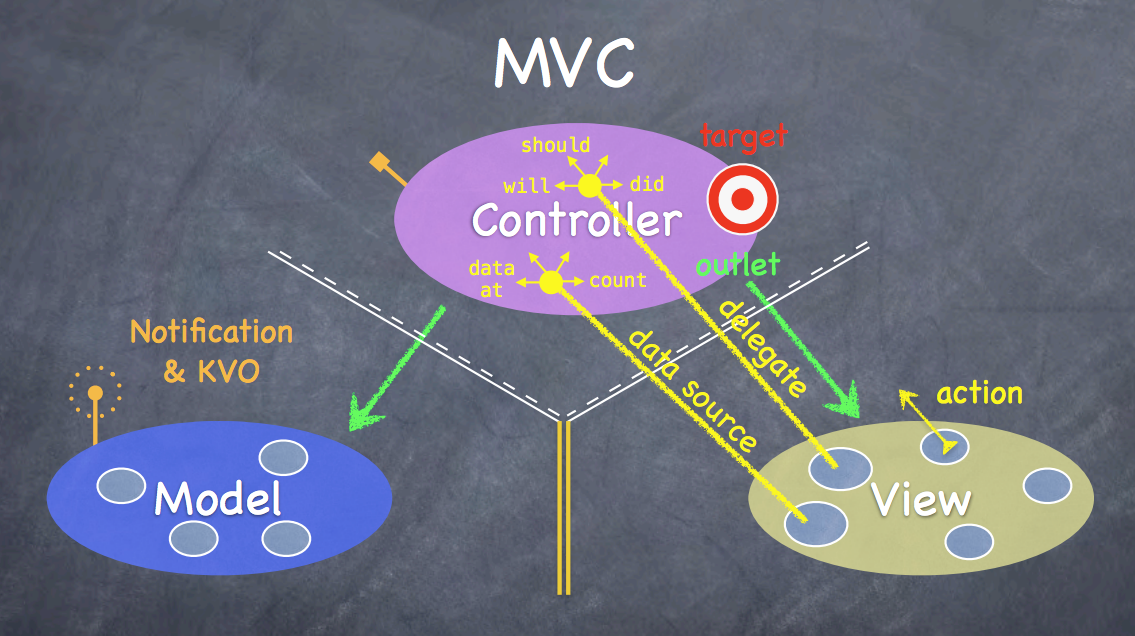MVC

- Model Objects Encapsulate Data and Basic Behaviors
- View Objects Present Information to the User
- Controller Objects Tie the Model to the View
Cocoa MVC encourages you to write Massive View Controllers, because they are so involved in View’s life cycle that it’s hard to say they are separate. Although you still have ability to offload some of the business logic and data transformation to the Model, you don’t have much choice when it comes to offloading work to the View, at most of times all the responsibility of the View is to send actions to the Controller. The view controller ends up being a delegate and a data source of everything, and is usually responsible for dispatching and cancelling the network requests and… you name it.
The interactions between the View and the Controller aren’t really testable with Unit Tests